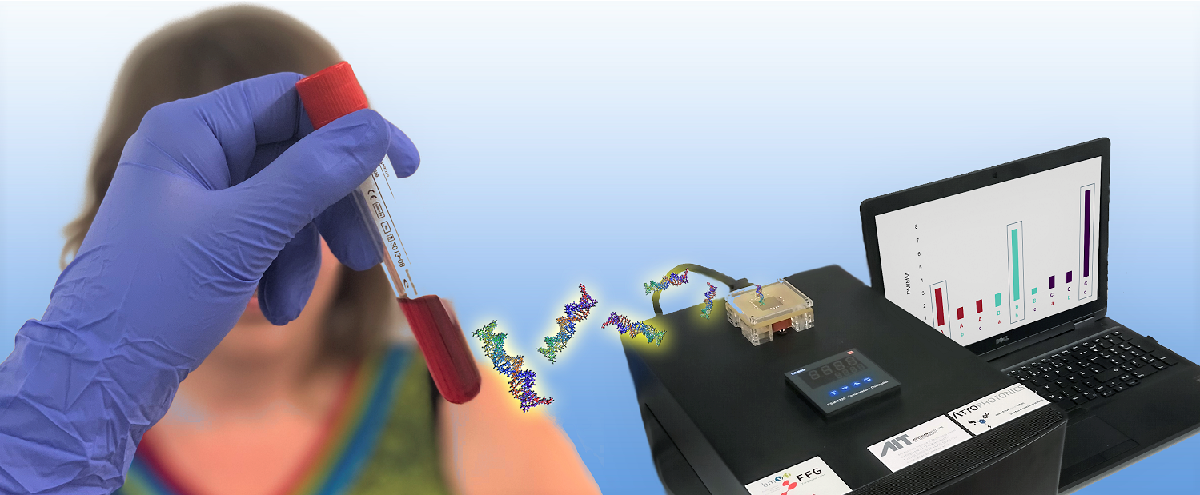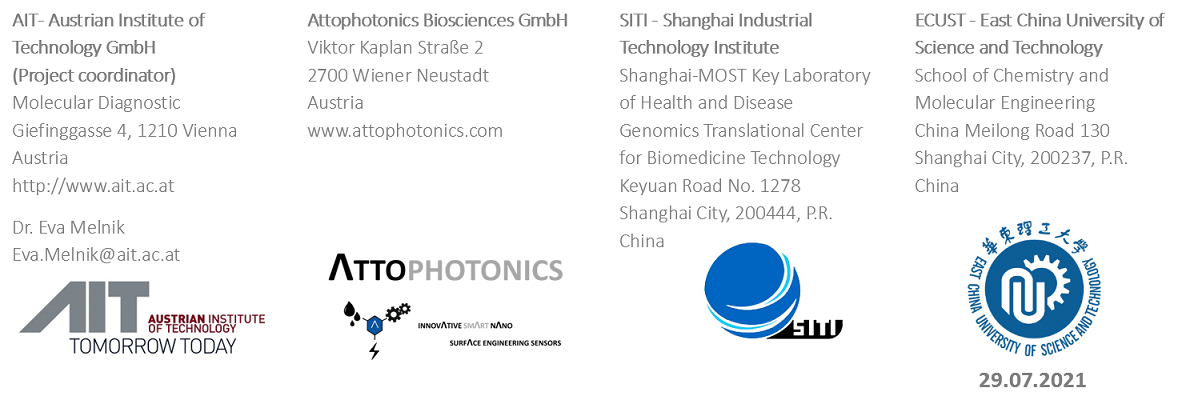
Printed Nanoporous Sensors for the Detection of
Circulating Tumor DNA

A cost-effective system for the routine detection and monitoring of cancer
The diagnosis and monitoring of cancers is usually carried out in specialized laboratories. This can create delays between sampling and diagnosis, causing the target analyte in the sample to degrade. One way of preventing this would be to develop complex storage and transportation methods to ensure quicker processing, but a more viable alternative is to set up diagnostic devices that can be implemented directly at the site of care.
Our project goal is to develop a highly integrated multiparametric electrochemical test for circulating tumor DNA (ctDNA) for the detection and monitoring of breast cancer. The rapid test will be able to carry out a liquid biopsy of the tumor by taking and examining blood directly in the office of the doctor or the site of care. Applications include cancer screening, metastasis monitoring, and assessment of therapy effectiveness. This technology can also be adapted for different cancers that have nucleic acid-based biomarkers in their specific clinical picture.
Diagnostic optimization
To make genetic modifications in cancer patients visible, the DNA sections that carry specific mutations must be examined. This project does so electrochemically, using a sensor array. To ensure optimal diagnostic features, metal particles are added to screen-printed sensors forming a nanoporous structure during the sinter process. Subsequently, the refined surface is modified with specific capture molecules employing bioink printing methods. This makes it possible to monitor ctDNA binding efficiency, which is proportional to the occurrence of mutations or cancerous cells. Since the percentage of ctDNA in blood is very low, it must first be multiplied (amplified). This amplification is carried out by integrating chemical components into the surface of the sensor using ink jet printing. Once this step is successful, detection times will be reduced to under 30 minutes and the detection process will be significantly simplified.


